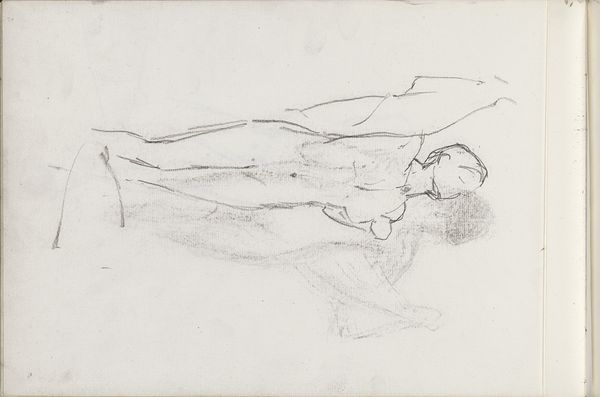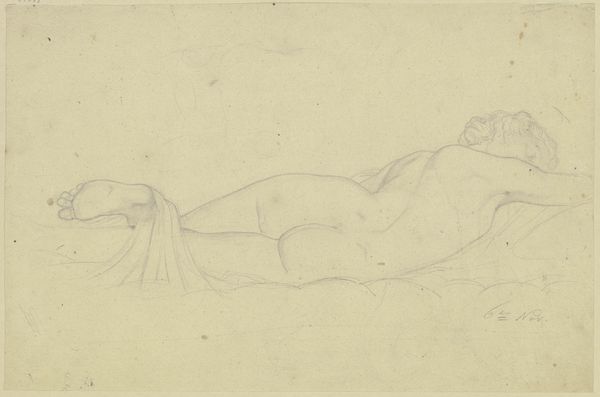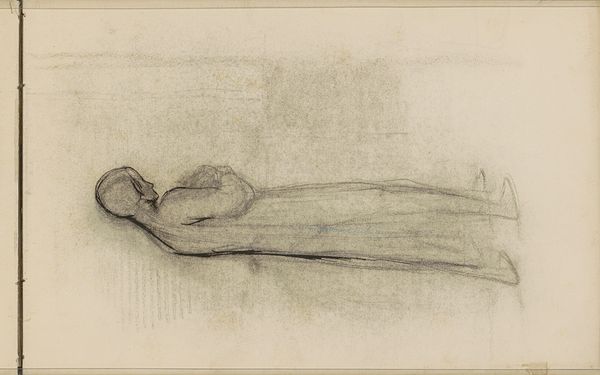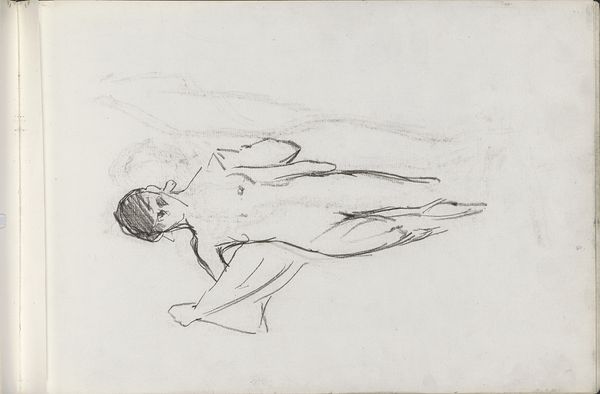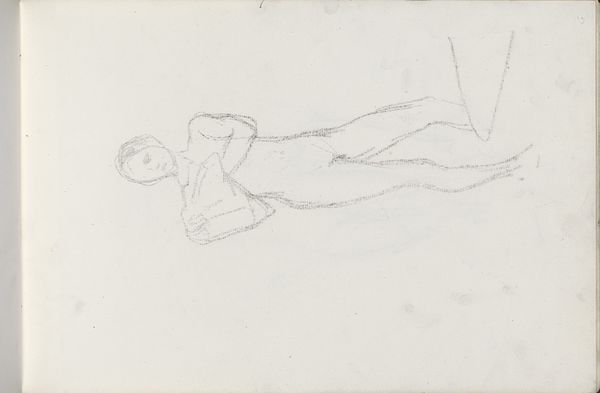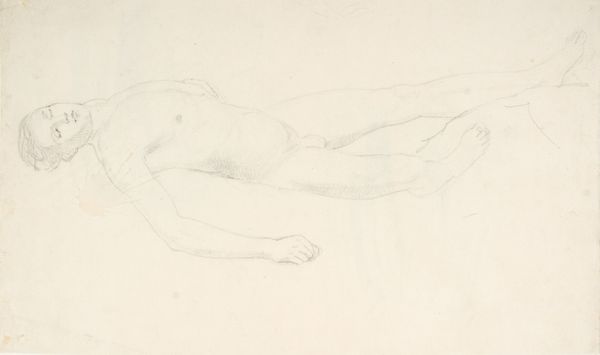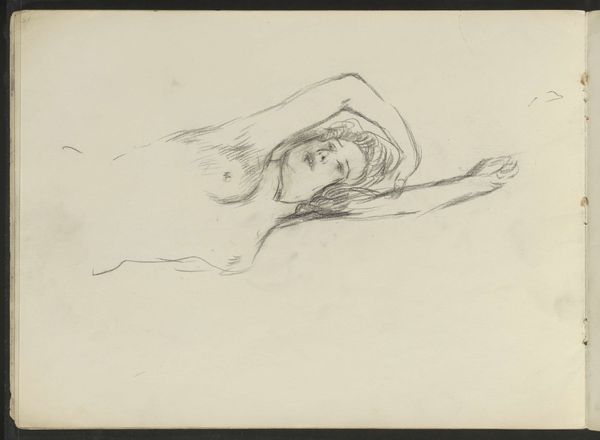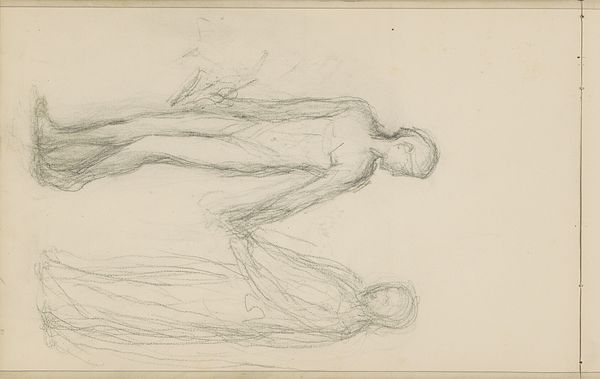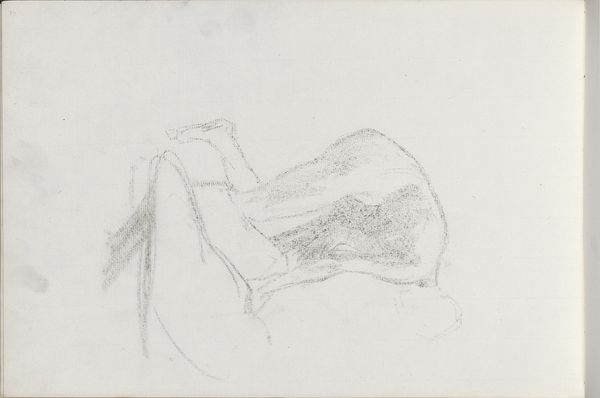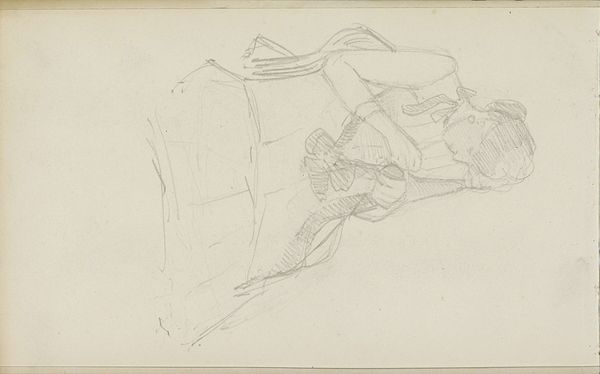
Interieur met een staande vrouw die een baby tegen haar borst draagt 1865 - 1913
0:00
0:00
braminehubrecht
Rijksmuseum
drawing, pencil
#
portrait
#
pencil drawn
#
drawing
#
figuration
#
pencil
Copyright: Rijks Museum: Open Domain
Editor: Here we have "Interior with a Standing Woman Holding a Baby to Her Chest", a pencil drawing created sometime between 1865 and 1913. It feels quite simple and raw, almost like a study. What do you make of it? Curator: From a materialist perspective, the artist’s choice of pencil is very telling. Pencil, as a readily available and inexpensive medium, democratizes art making. It speaks volumes about accessibility and challenges the elitism often associated with art production. How does the immediacy of the pencil sketch influence your perception of the artist’s intent, given the labor and skill involved even in a "simple" drawing? Editor: It does make it feel more accessible. Like the artist was just capturing a moment, not creating some grand statement. Does the fact that it is a figure affect your opinion? Curator: Absolutely. Figure drawing, especially depictions of domestic scenes, were often relegated to women artists or considered "minor" genres. By choosing this subject and material, the artist possibly reflects or resists these social hierarchies. Think of the material conditions of women artists at this time. How did factors like access to studios, formal training, and exhibition opportunities shape their artistic output and choices? Editor: So you are saying, the medium itself helps put the artist into a cultural setting? It really wasn't *just* the artwork she was creating. Curator: Precisely. It’s never *just* the artwork. The materials used, the way they are employed, and the subject matter are all intertwined with the social, economic, and political realities of the artist and her time. Considering that many women made art from their homes while maintaining the home and children adds an extra layer to understanding artmaking. Editor: I had never really thought of it like that before, about *why* the artist chose these items or means. Thanks for your perspective! Curator: My pleasure. Viewing art through a materialist lens opens up exciting avenues for understanding the work and the hands that made it.
Comments
No comments
Be the first to comment and join the conversation on the ultimate creative platform.
